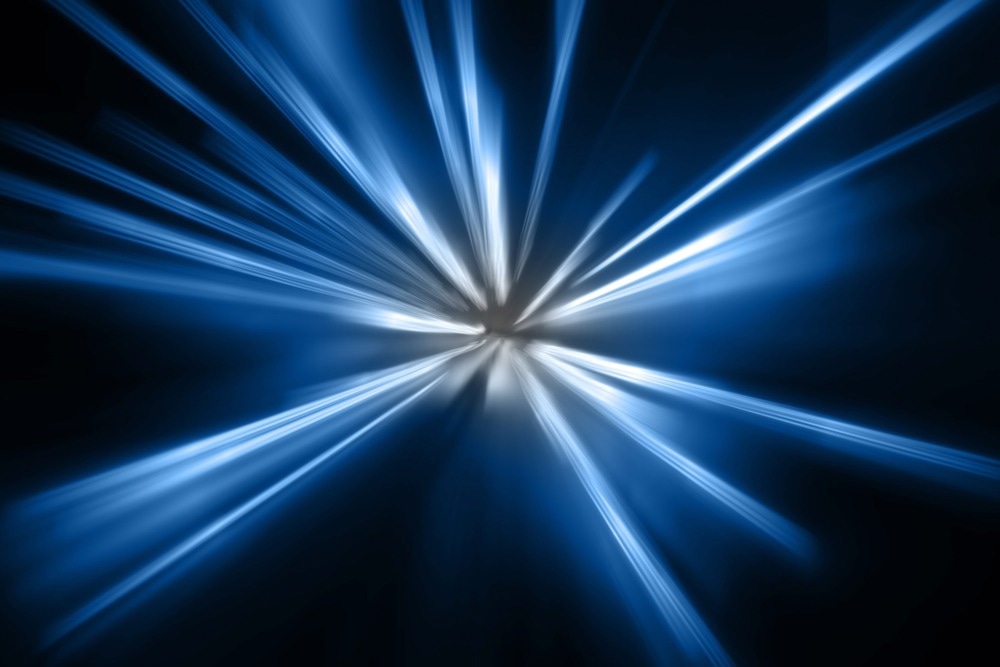Recent breakthroughs in astrophysics have unveiled a fascinating connection between the gamma-ray flares of blazars and the elusive high-energy neutrinos, offering new insights into the most energetic phenomena in the universe and potentially revolutionizing our understanding of cosmic ray origins.

Image Credit: Barbol/Shutterstock.com
The study, conducted by a team of international astronomers, unveils significant advancements in our understanding of galaxy formation and evolution. Utilizing sophisticated observational techniques, researchers have identified key processes that govern the dynamics of distant galaxies. This research not only enhances our knowledge of galactic structures but also challenges existing theories.
Complementing these astronomical insights, researchers at Shibaura Institute of Technology have made their own strides in space exploration. Their recent developments in astronomical instrumentation and observational methodologies are poised to revolutionize our approach to studying the cosmos. These advancements promise not only to refine our current understanding but also to open new avenues for future exploration.
The study investigates the relationship between gamma-ray flares from blazars and their production of high-energy neutrinos, a hypothesis supported by observations like the IceCube-170922A neutrino detected during a blazar flare. The research involves a statistical analysis of gamma-ray emissions from 145 blazars, using weekly binned light curves and a Bayesian blocks algorithm to determine the duration and energy of flares.
The findings show that blazars more frequently have lower flare duty cycles and energy fractions. A notable difference in flare duty cycles between different blazar subclasses was observed. By applying a scaling relation between neutrino and gamma-ray luminosities, the study evaluates the neutrino energy flux from each gamma-ray flare, suggesting that stronger flares might dominate blazar neutrino emission. The study also compares neutrino energy fluxes over various time spans with IceCube's sensitivity, offering constraints on neutrino emission models for gamma-ray flares and presenting an upper limit for the contribution of these flares to the overall diffuse neutrino flux.
The research aids in identifying potential sources and acceleration mechanisms of cosmic rays, enriches our understanding of astrophysical neutrino sources, and contributes to multi-messenger astronomy, which combines different observational data for a comprehensive view of the universe. Additionally, it refines our models of blazars, supports the testing and refinement of theoretical models in astrophysics, and enhances our understanding of the isotropic diffuse neutrino flux, a key component in studying cosmic backgrounds. This study, therefore, represents a substantial step forward in unraveling the mysteries of the most energetic processes and particles in the cosmos.
The implications of these discoveries are, therefore, far-reaching, potentially influencing a host of scientific fields. By providing a more nuanced understanding of galactic behaviors, this research could lead to new models and predictions about the universe's future. Furthermore, these findings underscore the importance of international collaboration and technological innovation in advancing our cosmic knowledge.
Sources:
Yoshida, K. et al. (2023) ‘Flare duty cycle of gamma-ray blazars and implications for high-energy neutrino emission’, The Astrophysical Journal, 954(2), p. 194. doi:10.3847/1538-4357/acea74 https://iopscience.iop.org/article/10.3847/1538-4357/acea74
Investigating the contribution of gamma-ray blazar flares to neutrino flux (no date) Investigating the Contribution of Gamma-Ray Blazar Flares to Neutrino Flux|Shibaura Institute of Technology. Available at: https://www.shibaura-it.ac.jp/en/headline/detail/20231120_7070_623_1815.html (Accessed: 21 November 2023).